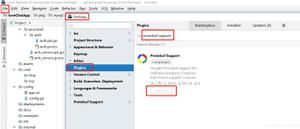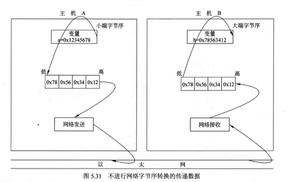Python标准库gzip对gzip格式的支持

源代码: Lib/gzip.py
此模块提供的简单接口帮助用户压缩和解压缩文件,功能类似于 GNU 应用程序 gzip 和 gunzip。
数据压缩由 zlib 模块提供。
gzip 模块提供 GzipFile 类和 open()、compress()、decompress() 几个便利的函数。GzipFile 类可以读写 gzip 格式的文件,还能自动压缩和解压缩数据,这让操作压缩文件如同操作普通的 file object 一样方便。
注意,此模块不支持部分可以被 gzip 和 gunzip 解压的格式,如利用 compress 或 pack 压缩所得的文件。
这个模块定义了以下内容:
gzip.open(filename, mode='rb', compresslevel=9, encoding=None, errors=None, newline=None)¶以二进制方式或者文本方式打开一个 gzip 格式的压缩文件,返回一个 file object。
filename 参数可以是一个实际的文件名(一个a
str对象或者bytes对象), 或者是一个用来读写的已存在的文件对象。mode 参数可以是二进制模式:
'r','rb','a','ab','w','wb','x'or'xb', 或者是文本模式'rt','at','wt', or'xt'。默认值是'rb'。The compresslevel argument is an integer from 0 to 9, as for the
GzipFileconstructor.对于二进制模式,这个函数等价于
GzipFile构造器:GzipFile(filename,mode,compresslevel)。在这个例子中,encoding, errors 和 newline 三个参数一定不要设置。对于文本模式,将会创建一个
GzipFile对象,并将它封装到一个io.TextIOWrapper实例中, 这个实例默认了指定编码,错误抓获行为和行。在 3.3 版更改: 支持 filename 为一个文件对象,支持文本模式和 encoding, errors 和 newline 参数。
在 3.4 版更改: 支持
'x','xb'和``'xt'`` 三种模式。在 3.6 版更改: 接受一个 path-like object。
class
gzip.GzipFile(filename=None, mode=None, compresslevel=9, fileobj=None, mtime=None)¶GzipFile类的构造器支持truncate()的异常,与 file object 的大多数方法非常相似。fileobj 和 filename 至少有一个不为空。新的实例基于 fileobj,它可以是一个普通文件,一个
io.BytesIO对象,或者任何一个与文件相似的对象。当 filename 是一个文件对象时,它的默认值是None。当 fileobj 为
None时, filename 参数只用于 gzip 文件头中,这个文件有可能包含未压缩文件的源文件名。如果文件可以被识别,默认 fileobj 的文件名;否则默认为空字符串,在这种情况下文件头将不包含源文件名。The mode argument can be any of
'r','rb','a','ab','w','wb','x', or'xb', depending on whether the file will be read orwritten. The default is the mode of fileobj if discernible; otherwise, the
default is
'rb'.需要注意的是,文件默认使用二进制模式打开。如果要以文本模式打开文件一个压缩文件,请使用
open()方法(或者使用io.TextIOWrapper包装GzipFile)。compresslevel 参数是一个从
0to9的整数,用于控制压缩等级;1最快但压缩比例最小,9最慢但压缩比例最大。0不压缩。默认为9。The mtime argument is an optional numeric timestamp to be written to
the last modification time field in the stream when compressing. It
should only be provided in compression mode. If omitted or
None, thecurrent time is used. See the
mtimeattribute for more details.调用
GzipFile的close()方法不会关闭 fileobj,因为你可以希望增加其它内容到已经压缩的数中。你可以将一个io.BytesIO对象作为 fileobj,也可以使用io.BytesIO的getvalue()方法从内存缓存中恢复数据。GzipFile支持io.BufferedIOBase类的接口, 包括迭代和with语句。只有truncate()方法没有实现。GzipFile还提供了以下的方法和属性:peek(n)¶在不移动文件指针的情况下读取 n 个未压缩字节。最多只有一个单独的读取流来服务这个方法调用。返回的字节数不一定刚好等于要求的数量。
注解
调用
peek()并没有改变GzipFile的文件指针,它可能改变潜在文件对象(例如:GzipFile使用 fileobj 参数进行初始化)。3.2 新版功能.
mtime¶在解压的过程中,最后修改时间字段的值可能来自于这个属性,以整数的形式出现。在读取任何文件头信息前,初始值为
None。所有 gzip 东方压缩流中必须包含时间戳这个字段。以便于像 gunzip这样的程序可以使用时间戳。格式与
time.time()的返回值和os.stat()对象的st_mtime属性值一样。
在 3.1 版更改: 支持
with语句,构造器参数 mtime 和mtime属性。在 3.2 版更改: 添加了对零填充和不可搜索文件的支持。
在 3.3 版更改: 实现
io.BufferedIOBase.read1()方法。在 3.4 版更改: 支持
'x'and'xb'两种模式。在 3.5 版更改: 支持写入任意 bytes-like objects。
read()方法可以接受``None``为参数。在 3.6 版更改: 接受一个 path-like object。
gzip.compress(data, compresslevel=9)¶压缩 data 返回一个包含压缩数据的
bytes对象。 compresslevel 的意义与上面提到的GzipFile构造器一至。3.2 新版功能.
gzip.decompress(data)¶解压数据,返回一个
bytes包含未解压数据的对象。3.2 新版功能.
用法示例¶
读取压缩文件示例:
importgzipwithgzip.open('/home/joe/file.txt.gz','rb')asf:
file_content=f.read()
创建GZIP 文件示例:
importgzipcontent=b"Lots of content here"
withgzip.open('/home/joe/file.txt.gz','wb')asf:
f.write(content)
使用 GZIP 压缩已有的文件示例:
importgzipimportshutil
withopen('/home/joe/file.txt','rb')asf_in:
withgzip.open('/home/joe/file.txt.gz','wb')asf_out:
shutil.copyfileobj(f_in,f_out)
使用 GZIP 压缩二进制字符串示例:
importgzips_in=b"Lots of content here"
s_out=gzip.compress(s_in)





